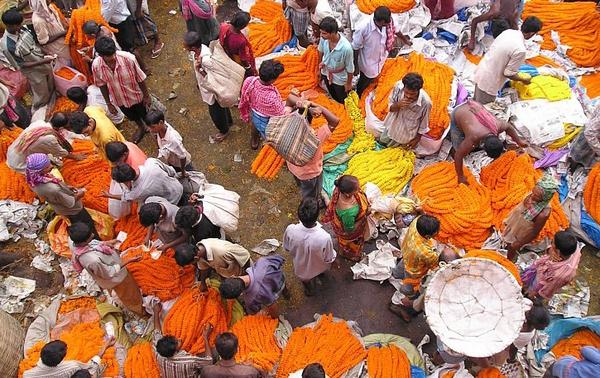Kolkata 2008

Prof. Jacques Herzog, Prof. Pierre de Meuron,
Manuel Herz, Shadi Rahbaran, Ying Zhou
Exercise types: ‘e’ (Entwurf) or ‘e+i’ (Entwurf mit Integrierter Disziplin, Dozentur Soziologie)
Group work in Basel and in research location
Start: Wednesday, 17. September, 2008, 10 AM at ETH Studio Basel, Spitalstrasse 8, 4056 Basel
Hardly any other city evokes images as intense, wide-ranging and truly urban as Calcutta (recently renamed Kolkata). Simultaneously described as the “Second City of the Empire”, “City of Palaces”, “Paris of India”, the nation’s cultural capital, a daily festival of human existence, a celebration of life, a plethora of suffering, the “City of Dreadful Nights” (Rudyard Kipling) and even as “God’s excrement” (Günter Grass: Scheisshaufen Gottes) Kolkata is a manifestation of urban conditions if there ever was one. We will continue our urban research at ETH Studio Basel with an investigation on this east Indian metropolis.
Having been the economical center of the Indian subcontinent and the capital of the British Raj from the 18th century until 1912, Kolkata has since then undergone major phases of reshaping and reorganization with a deep impact on the city’s fabric. The move of representational and administrative functions to New Delhi in the beginning of the 20th century created a vacuum in the city that was only deepened when – the country upon its independence splitting into India and Pakistan – the city lost most of its hinterland and suddenly finding itself located at the eastern fringe of the newly formed nation. When Bangladesh fought its secessionist war against Pakistan in 1971, the city became the destination of hundred thousands of refugees fleeing the conflict. The activities of Mother Theresa and other charity organizations have since then reinforced the city’s image of urban squalor. In more recent years Kolkata has established itself as a center of cultural production and is occupying an ever more central place in the global economy with the rising importance of its IT and communications sector.
One of the major factors that has shaped the city, and continues to do so in probably more acute ways than before, is water. Water has always been an important element in Indian city planning, and has been employed to created microclimates, wells, tanks, areas for washing, recreation and ritual, which now dot the urban landscape. Located on the Hooghly River, one of the main distributaries of the Ganges delta, Kolkata is unremittingly exposed to water. Regularly experiencing major floods during the times of the monsoon, it is also frequently facing tropical cyclones from the Bay of Bengal, at times bringing devastation and death to the area. With unfolding climate change, the city is ever more feeling the need to respond urbanistically to new dangers and challenges. Being located at an altitude just barely above sea-level, any increase in floodings or rise of the water level poses fundamental risks to the city. Due to this urgency, Kolkata finds itself in a strategic position with urbanistic responses to climate change necessarily having to be developed, tested out and implemented in the nearest future.
Since India’s independence Kolkata has grown rapidly and multiplied in size to reach a population of approximately 15 million inhabitants, making it one of the world’s largest metropolitan areas. It has seen a vast influx of immigrants from today’s Pakistan and Bangladesh, growing rapidly in times of war. Today exposed to a steady influx of rural-urban migrants, combined with natural growth, adding almost 400.000 people to the urban population every year, in the future it might find itself in the center of massive movements of climate refugees. How does a city cope with these elementary conditions of climate change while simultaneously experiencing rapid growth? Does it expand steadily or grow in stages with phases of stagnation, reinventing itself while growing, or holding on to an original identity, whether mythical or real? Kolkata can be seen as a showcase for the widest range of urban planning principles and concepts of the city. Fragments of rigourously planned cities, even ideal cities, are located next to historical urban fabric, areas of infrastructure and slums. Could we see Kolkata as a universe of urban conditions? What are the plans for the city’s future development and how could we conceive of an outlook not only in terms of threats and dangers, but as a future of latent potentials?
PEOPLE: PROF. JACQUES HERZOG, PROF. PIERRE DE MEURON, SHADI RAHBARAN, YING ZHOU, MANUEL HERZ

